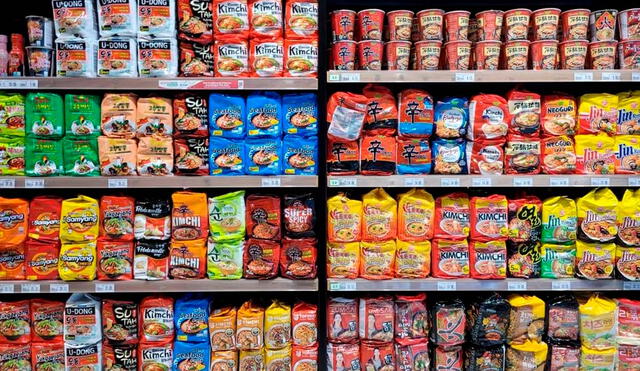Attention, America! 11 groceries you should buy before prices rise next week
As new tariffs surprise other countries from President Trump, some American stores could suffer increase other items. Here are some groceries you should buy in the U.S.

President Trump announced an unexpected 90-day delay on many new reciprocal tariff this week, but does not apply to China, which now faces a significantly higher tariff on 125%, up from the originally planned 104%. According to the White House, tariff were import to other Asian countries such as Vietnam, Taiwan, and South Korea.
As some countries faces expectations on how it will impact those tariffs, some Americans are wondering: What does this mean for consumers? In addition, some reports says grocery prices from Asia will rise in products like soy and rice. Here are 11 essential grocery items to stock up on now before the next price increase.

ALSO SEE: Goodbye to check-ins and boarding passes? New airline policies could change the aviation industry
11 grocery products you should buy before rises in the U.S.
Frozen tilapia and cod
In America, many fish are sourced from domestic suppliers, most of the low-cost seafood regularly comes from China.
Frozen cod tilapia are commonly farmed and processed in China. With a 104% tariff, fish fillets and nuggets could become extraordinary expensive soon.
Canned mushrooms
Although most fresh mushrooms are grown in the U.S., China leads supplies of canned mushrooms in grocery stores. The cost of canned mushrooms is likely to increase due to the import taxes.
Garlic
While most Americans believe California is the garlic capital, you should think twice. Most of U.S. shelves comes from China. Due to the tariff pressures, the price of garlic could spike in the next week.
Instant ramen and noodle cups
One of the most popular items in America, ramen and other Asian noodle cups, has an entire section in Costco stores in the United States.
Incredibly, most of these noodles are made in China or Vietnam, which both countries are facing steep tariff, so prices could go up in the next week.
Soy sauce and rice vinegar
Soy sauce, rice vinegar, and other condiments are primarily sourced from Asia. Some are made in China, while others contain Chinese ingredients. Regardless, price increases are expected for these items.
Snack foods with MSG or Citric Acid
Monosodium glutamate (MSG) is a common flavor enhancer, and citric acid, a widely us preservative, are both typically sourced from China. As a result, your favorite snacks may soon experience price hikes due to these tariffs.
Hard candies and lollipops
Many bulk candies are made in China or rely on Chinese factories for manufacturing. The added tariffs could raise prices for hard candies and lollipops, making them less affordable.
Canned fruits and pickled vegetables
Canned lychees and pickled radish are mostly imported from Asia, and with the tariffs in place, these niche items are expected to become more expensive.
Green tea and herbal infusions
A significant portion of tea, particularly green and Jasmine varieties, comes from Asian countries. Since both China and Taiwan are affected by tariffs, budget-friendly tea bags may no longer be as affordable.
Pet treats and chews
You might not realize it, but your dog's treats and rawhide chews are likely made in China, meaning you could see a sharp increase in your pet store expenses.
Plastic-wrapped packed meals and canned foods
Even if food products are made in the U.S., packaging materials such as plastic film, containers, and metal cans often come from tariff-impacted countries like China and South Korea. This means that nearly any packaged food could see a price increase.











